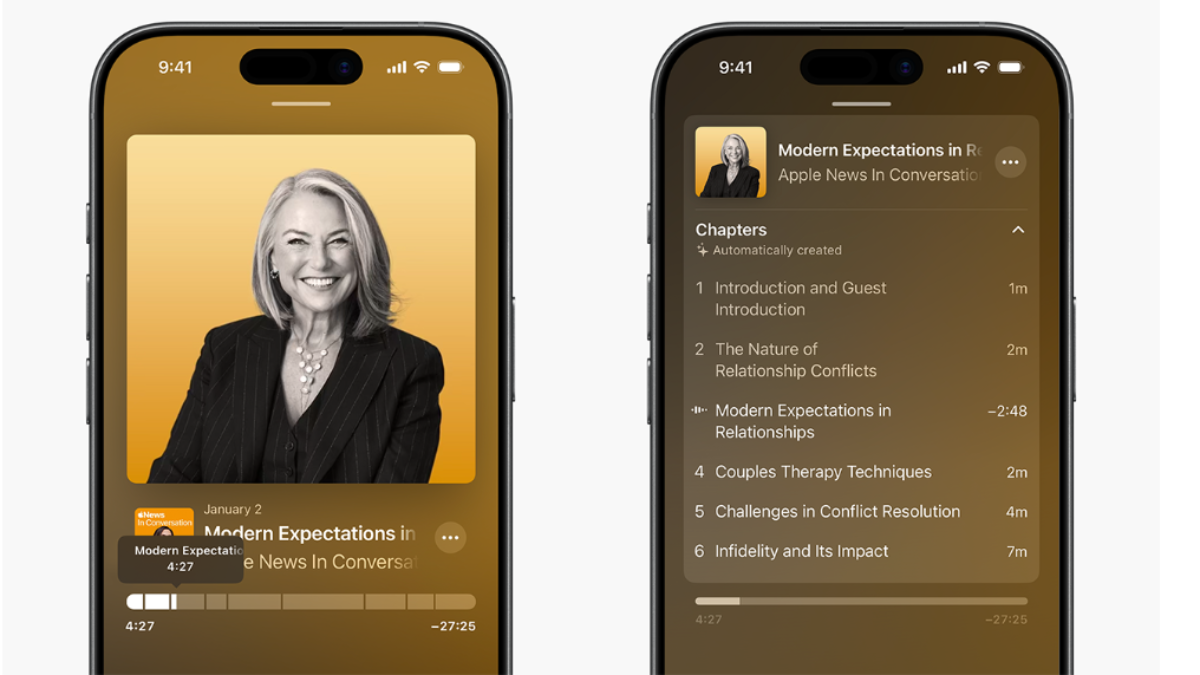What? Apple Podcasts will automatically generate chapters for podcasts in its next software update. Podcasts longer than 10 minutes will automatically be broken into sections, letting listeners navigate more easily. It will bring Apple Podcasts up to date with Spotify, which introduced automatic chapters earlier this year.
The move has been welcomed by podcasters, who until now had to add chapters manually. James Cridland, editor of Podnews, said the announcement was ‘great to see’ and praised Apple allowing creators to opt in or out.
The update also introduces a ‘timed links’ feature, which automatically provides links whenever another piece of media that is available in the Apple eco-system is mentioned. The links will pop up in a banner in the Now Playing screen and show up in the transcript and episode details page. According to the announcement, creators can provide links to Apple Podcasts, Apple Music, Apple News, Apple Books and Apple TV, though strangely not the App Store.
For example, if a podcast host references Severance then a link to watch the show on Apple TV would pop up. Apple Podcast said: ‘This makes it easy for you to promote shows within your network, spread the word about new content, or cross-promote with another creator.’
When will this happen? iOS 26.2 is in developer beta testing and expected to roll out in December this year.
Why should brands care? The main concern for advertisers is that Apple, by automatically generating chapters, will make it easier for listeners to skip ads. According to Sounds Profitable’s 2024 report, 46% of listeners already say they ‘always or often’ skip ads on podcasts. Moving to a world where every podcast automatically has clearly outlined sections, and therefore clearly outlined adverts, makes it even easier and more tempting for listeners to jump forward.
If you’re a more ‘glass half-full’ type of person, the timed links feature offers some potential opportunities. While the links do not appear for content outside of Apple’s eco-system, meaning they won’t be able to be used for advertising right now, it’s not hard to see how this could be extended to advertising in the future. If it does, it could lay the groundwork for true interactive audio advertising and, crucially, for proper attribution in podcasts.

